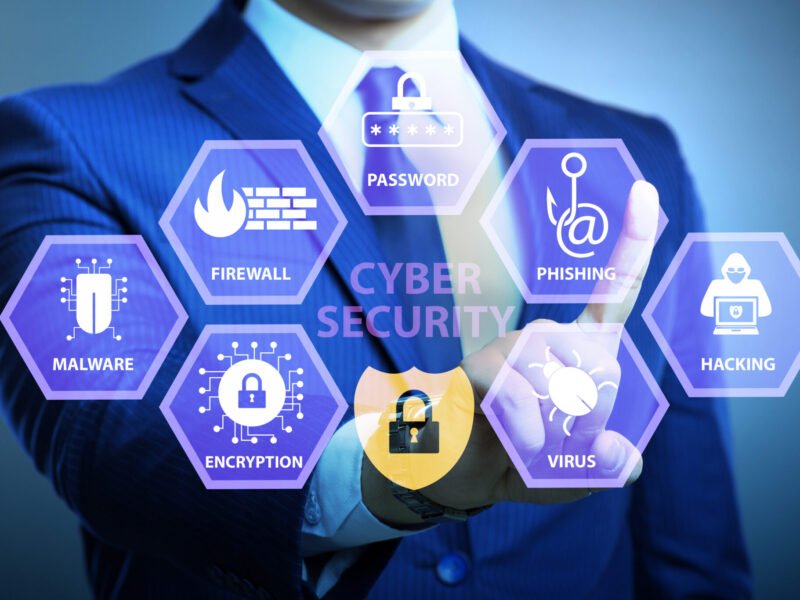Are you confident that your business is ready to face the cyber threats of tomorrow? Can your current defenses withstand the growing complexity of cyberattacks targeting organizations daily? As technology advances, so do the tactics of hackers, making cybersecurity trends businesses must prioritize in 2025 more critical than ever. Ignoring these trends is not just risky—it’s a direct threat to your organization’s survival.
This guide explores the cybersecurity priorities businesses must adopt to stay resilient in an ever-evolving digital landscape. From advanced AI threats to regulatory compliance, the stakes have never been higher. Understanding and implementing these trends is no longer optional; it’s a necessity.
Why Cybersecurity Is More Critical Than Ever
Does it feel like cyber threats are growing faster than your ability to defend against them? You’re not imagining it. Businesses today are more interconnected than ever, creating a larger surface area for attacks.
What’s Driving the Urgency?
- Remote Work: Increased reliance on remote access creates vulnerabilities.
- Cloud Adoption: While convenient, it opens doors for misconfigurations and data breaches.
- IoT Expansion: Billions of devices connecting to networks amplify risks.
- Sophisticated Hackers: Cybercriminals now operate as organized entities with advanced tools.
Cyber threats are no longer abstract risks—they’re immediate, tangible dangers that can cripple operations, damage reputations, and drain financial resources.
The Rise of Artificial Intelligence in Cyberattacks
Have you considered how advanced technology can be turned against your business?
How AI Threatens Security:
- Adaptive Malware: AI-powered malware learns and evolves, making it difficult to detect.
- Spear Phishing: AI creates convincing, personalized phishing emails that trick even cautious users.
- Automated Attacks: Hackers use AI to launch attacks at scale, targeting vulnerabilities faster than human capabilities.
The Defense: Leveraging AI for Good
Businesses must adopt AI-powered cybersecurity solutions to counter these threats. These tools analyze patterns, detect anomalies, and respond to incidents in real-time. For example, AI-based threat detection platforms can identify unusual network activity and isolate threats before they cause harm.
Strengthening Cloud Security as Adoption Grows
Is your business fully prepared to secure its cloud infrastructure?
Cloud Security Challenges:
- Misconfigurations: Simple errors can expose sensitive data.
- Shared Responsibility: Confusion over security roles between providers and users.
- Unauthorized Access: Weak access controls can lead to breaches.
Best Practices for Cloud Security:
- Adopt Zero-Trust Policies: Verify every user and device attempting to access cloud resources.
- Continuous Monitoring: Use tools that provide real-time insights into cloud activity.
- Encryption: Ensure that all data, both in transit and at rest, is encrypted.
Real-World Testimonial: “After implementing a cloud-native security platform, we gained visibility into our environment and reduced misconfigurations by 70%.” – Karen, IT Manager at a SaaS company
The Expanding Threat of Ransomware
Would your business survive a ransomware attack?
Why Ransomware Is Growing:
- Lucrative for Hackers: Ransom payouts have reached millions.
- Target Diversity: Small businesses, hospitals, and even city governments are targets.
- Double Extortion: Attackers demand payment not just to unlock data but also to avoid leaking it.
How to Protect Your Business:
- Backup Strategies: Maintain regular, secure backups that are isolated from your network.
- Employee Training: Teach staff to recognize phishing attempts.
- Patch Management: Keep systems updated to eliminate known vulnerabilities.
Embracing Zero-Trust Architecture
Have you heard the phrase, “Never trust, always verify”?
Why Zero-Trust Matters:
Traditional perimeter defenses assume everything inside the network is safe. Zero-trust challenges this by:
- Requiring Continuous Authentication: Verifying users and devices at every stage.
- Segmenting Networks: Limiting access to sensitive areas.
- Reducing Insider Threats: Preventing employees from accessing data they don’t need.
Steps to Implement Zero-Trust:
- Use multi-factor authentication (MFA).
- Implement least-privilege access policies.
- Regularly audit permissions and remove unnecessary access.
Regulatory Compliance: Navigating the Evolving Landscape
Are you keeping up with changing cybersecurity regulations?
Key Regulations to Watch in 2025:
- GDPR (Europe): New amendments may increase penalties for non-compliance.
- CCPA (California): Expanding consumer rights and enforcement measures.
- Emerging Laws: Nations like India and Brazil are introducing stricter cybersecurity mandates.
The Cost of Non-Compliance:
- Financial penalties.
- Reputational damage.
- Legal liabilities.
How to Stay Compliant:
- Regularly review changes in relevant laws.
- Use compliance management tools.
- Engage legal experts for guidance.
The Role of Employee Training in Cybersecurity
Do your employees understand their role in protecting your business?
Why Employees Are Key:
- Human error is the leading cause of breaches.
- Phishing attacks target individuals, not just systems.
Effective Training Techniques:
- Interactive Workshops: Simulate real-world scenarios.
- Phishing Simulations: Test and educate employees on recognizing threats.
- Clear Policies: Provide guidelines on password hygiene and device usage.
Real-World Example: “After conducting monthly cybersecurity workshops, phishing click rates dropped by 60% in our organization.” – Tom, Security Director
Securing the Internet of Things (IoT)
Have you considered the security risks posed by IoT devices?
Unique IoT Challenges:
- Limited built-in security features.
- Lack of update mechanisms.
- Increasing use in critical industries like healthcare and manufacturing.
IoT Security Best Practices:
- Secure by Design: Choose devices with strong security features.
- Network Segmentation: Keep IoT devices on separate networks.
- Regular Updates: Apply firmware updates promptly.
Building Resilience Through Cybersecurity Partnerships
Can your business handle cybersecurity alone?
The Benefits of Collaboration:
- Access to expert knowledge.
- Cost-effective threat monitoring and response.
- Participation in threat intelligence networks.
How to Form Effective Partnerships:
- Partner with managed security service providers (MSSPs).
- Join industry groups focused on cybersecurity.
- Collaborate with vendors to secure your supply chain.
FAQs: Addressing Cybersecurity Concerns
Q: Is cybersecurity only relevant for large businesses?
A: No, small and medium businesses are frequent targets due to perceived vulnerabilities.
Q: How much should I budget for cybersecurity?
A: While it varies by industry, investing 10-15% of your IT budget in security is a good starting point.
Q: Are free cybersecurity tools effective?
A: Free tools can provide basic protection but should complement, not replace, comprehensive solutions.
Protecting Your Business in 2025 and Beyond
Cybersecurity is no longer just an IT issue—it’s a business priority. The cybersecurity trends businesses must prioritize in 2025 highlight the need for proactive, multi-layered strategies to combat evolving threats.
Next Steps to Secure Your Business:
- Assess Vulnerabilities: Conduct a thorough security audit.
- Invest in Technology: Implement AI-driven and zero-trust solutions.
- Train Your Team: Empower employees to be the first line of defense.
- Stay Informed: Monitor evolving threats and regulations.
Ready to secure your business against the threats of tomorrow? Explore advanced cybersecurity solutions, build strong partnerships, and prioritize your digital defenses today. Waiting for an attack to act is no longer an option. Take the first step toward resilience now.



